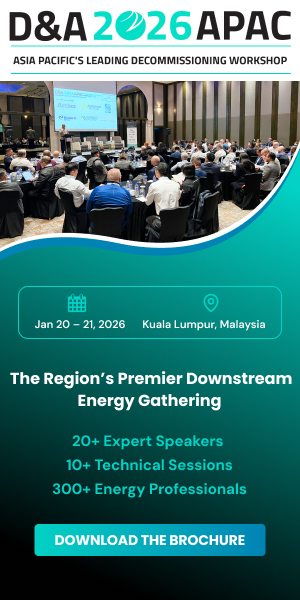The ten countries of the Association of Southeast Asian Nations (ASEAN) represent one of the most dynamic parts of the global energy system, and their energy demand has grown by 60 per cent over the past 15 years
In a region where an estimated 65mn people remain without electricity, projects to expand capacity for refining, petrochemicals and power are critical infrastructures for economic and social growth. To support plans for increased power generation, a new build geothermal power plant needed to be commissioned in the region.
Deadlines were tight and the cost needed to be minimised in order to complete the project within budget. To meet these ambitious targets, a novel approach to coating selection was required.
The Challenge
Improved efficiency, reduced waste and cost optimisation are major challenges for large industrial projects and this was no different. In order to be profitable, everything was scrutinized to improve overall margin, so from project start, the coating specification was highlighted as a vital area where cost savings needed to be made.
Previous experience in the fabrication of the geothermal plants highlighted rework costs and low productivity as major contributors to overall printing costs. The major challenge was the massive complexity of the project which contributed to large rework spends and reduced productivity. Large volumes of bulk supplied items such as pipes, valves and vessels were needed, operating at different temperatures and service environments e.g. beneath insulation.
Traditional coating systems are designed to offer corrosion protection over a limited range of service environments and temperature, which means that on previous projects, more than seven different coatings were needed to protect the various pipes, valves and vessels.
On previous projects, the challenge of coating specification complexity had caused:
• Reduced productivity at the application stage
• Increased chance of errors requiring rework, adding application cost
• Increased rework costs onsite during the construction phase as equipment arriving with the incorrect coating system for the final operating environment was reworked to a correct coating.
• Increased risk of CUI and other corrosion issues on the finished plant, increasing M&R costs.
Training was difficult with a painting workforce that rapidly changed depending on workload and so the challenge was to cut costs and guarantee delivery of the project on time.
Traditional anti-corrosive solutions had shown to add cost and complexity, so the project team decided to look for a proven and reliable alternative solution.
The Solution
After discussion with AkzoNobel, the decision was taken to apply the UPC approach to the project, using one ‘Universal Pipe Coating’ to paint all pipes, valves and vessels. Standardising the approach to coating specification greatly simplified the painting process, increasing productivity and improving quality.

• Excellent DFT tolerance to over-application reduces rework costs
• Short overcoating intervals maximise productivity during the application process
• Low-temperature cure, down to -5ºC (23ºF), reduces heating costs in the winter months
• Greater resistance to chalking than traditional epoxy phenolics, improving the lifetime
In addition, several added benefits were reported, helping to cut costs and reduce the risk of early failure:
• Reduced number of coats allows applicators to increase productivity and reduce mistakes
• Easier stock management, reducing wasted stock
• Easier application vs. traditional epoxy phenolics and Inorganic Zinc Silicate coatings, further reducing rework costs
Applying the ‘UPC Approach’ with Interbond 2340UPC to all pipes, valves and vessels saved approximately 10 per cent on overall rework costs over the course of the project, as well as greatly improving productivity and helping to ensure the maximum performance in operation.




